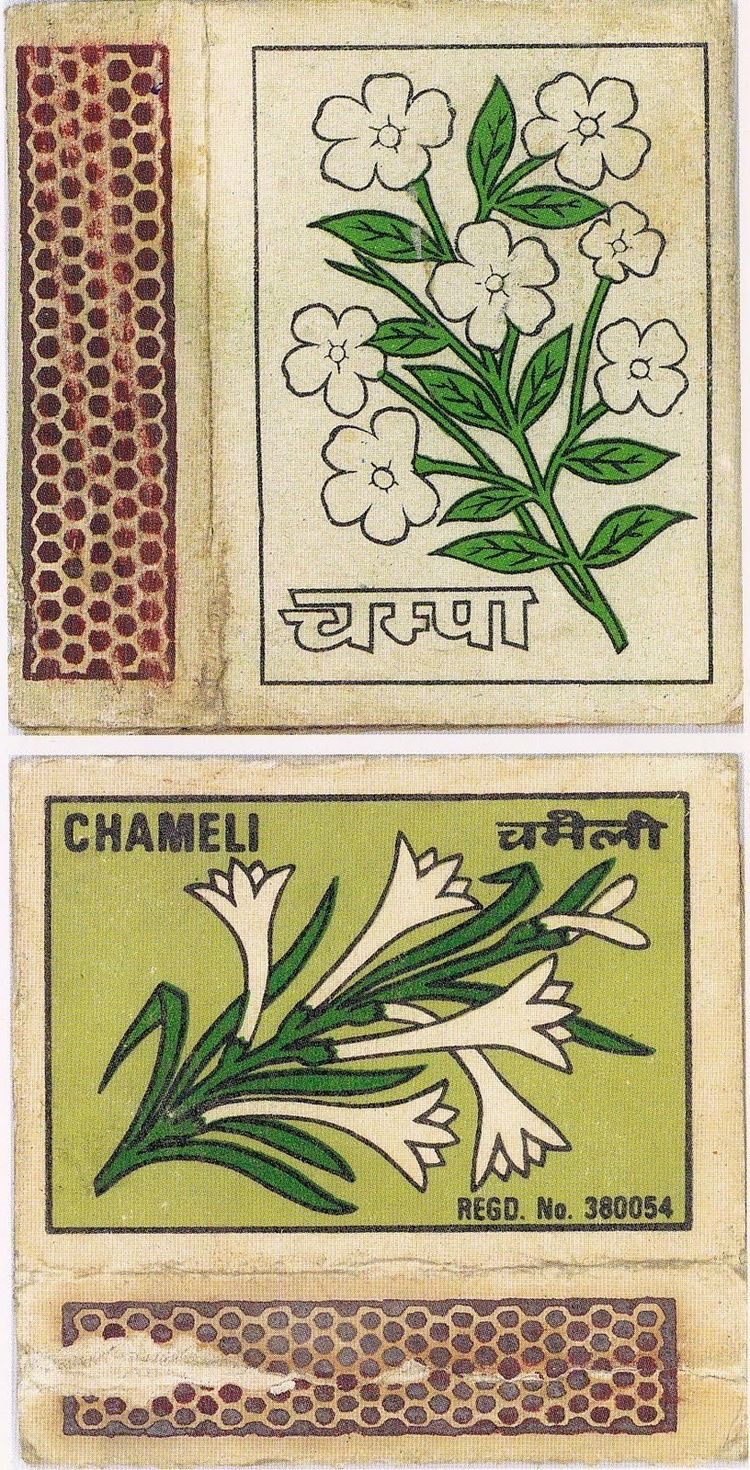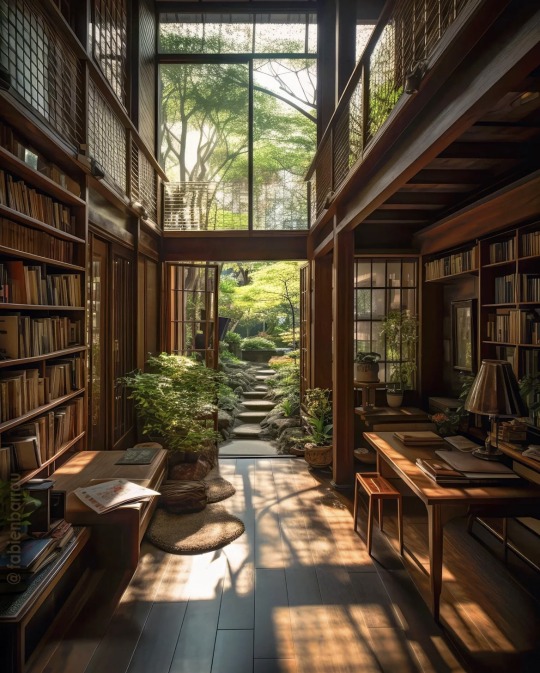Don't wanna be here? Send us removal request.
Text
BRAZIL. THE AMAZON RAINFOREST BELONGS TO BRAZIL. PLEASE HELP US PRESERVE IT THIS WAY. THE INDIGENOUS PEOPLE OF THIS LAND KNOW HOW TO CARE FOR IT, BUT THE WEALTHY DON'T. WE NEED TO ENCOURAGE THE GOVERNMENT TO ACT. LET'S MAKE THIS A GLOBAL EFFORT



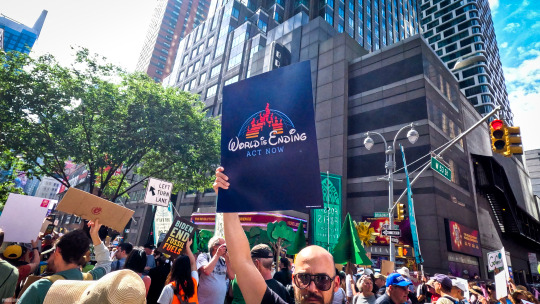
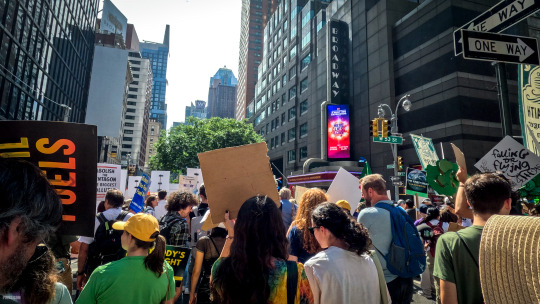

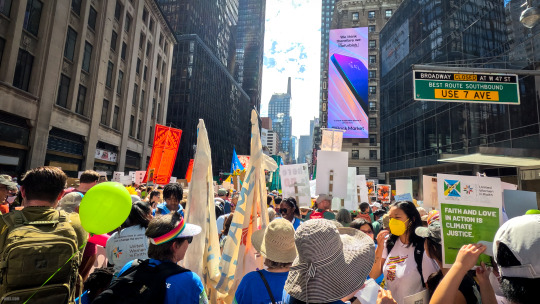
Climate Change March & Rally in New York City, September 17th, 2023.
2K notes
·
View notes
Text
BRAZIL. THE AMAZON RAINFOREST BELONGS TO BRAZIL. PLEASE HELP US PRESERVE IT THIS WAY. THE INDIGENOUS PEOPLE OF THIS LAND KNOW HOW TO CARE FOR IT, BUT THE WEALTHY DON'T. WE NEED TO ENCOURAGE THE GOVERNMENT TO ACT. LET'S MAKE THIS A GLOBAL EFFORT
We need everyone's help right now to protect the rainforest and Indigenous People
The Amazon Rainforest is under a massive threat. I know you've heard this a million times, but this is different. There is a piece of legislation that will decimate the rights of Indigenous people of Brazil, who have been protecting the rainforest. It's unfathomably bad. It has majority support. And they're voting tomorrow. As reported here, the Bill allows "the Brazilian government to find energy resources, set up military bases, develop strategic roads, and implement commercial agriculture on protected Indigenous tribal lands, without any prior discussion with the affected peoples."
The thing you can do—and I know this sounds overly simple—is sign this petition—and tell your friends to do the same: SIGN HERE.
As reported here, the Bill allows "the Brazilian government to find energy resources, set up military bases, develop strategic roads, and implement commercial agriculture on protected Indigenous tribal lands, without any prior discussion with the affected peoples."
Again, this bill has majority support. You may be wondering, why will a petition signed by people who don't live in Brazil make any difference? Because it will give those opposing it political air cover. It will show the world is with them.
But we need a LOT of signatures.
Please do this simple act and spread the word.
51K notes
·
View notes
Text
BRAZIL. THE AMAZON RAINFOREST BELONGS TO BRAZIL. PLEASE HELP US PRESERVE IT THIS WAY. THE INDIGENOUS PEOPLE OF THIS LAND KNOW HOW TO CARE FOR IT, BUT THE WEALTHY DON'T. WE NEED TO ENCOURAGE THE GOVERNMENT TO ACT. LET'S MAKE THIS A GLOBAL EFFORT
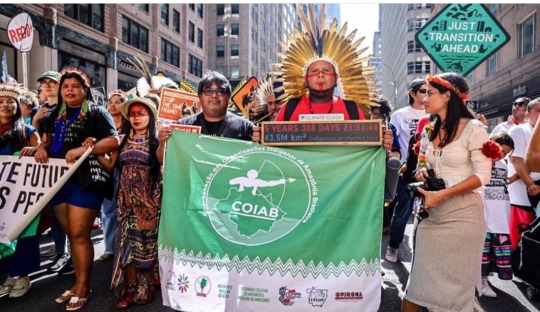
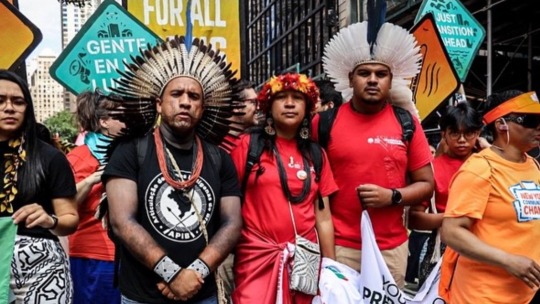
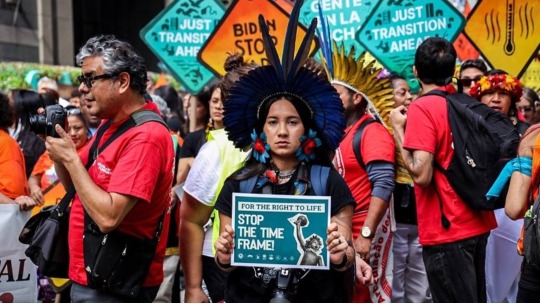



"Trial scheduled for September 20th at the Supreme Federal Court may determine the future of Indigenous Lands in Brazilian territory and be crucial for the global climate. The indigenous movement is mobilizing across Brazil, and an indigenous delegation from Apib is in New York during Climate Week to strengthen the international mobilization campaign in defense of Indigenous Lands rights."
"We are on the land, and the land is within us. If the land dies, we as indigenous peoples die."
The Articulação dos Povos Indígenas do Brasil (Articulation of Indigenous Peoples of Brazil — APIB) is calling for nationwide mobilizations this week and participating in the New York Climate Week to alert the world to the risks of the Supreme Federal Court (STF) judgment scheduled for September 20th. The court will vote on the legitimacy of the legal concept known as the "Temporal Framework," advocated by the Brazilian agribusiness, which could reevaluate Indigenous Land demarcations and impact global climate crisis mitigation efforts.
The Temporal Framework suggests that only indigenous people who can prove they were living on the land in 1988, the same year the Federal Constitution was created, should have rights to the land. This disregards the forced displacements of hundreds of indigenous groups who could only reclaim their traditional lands after Brazil's redemocratization in the late 1980s.
This week, the 15th edition of Climate Week is taking place in New York from September 17th to 24th, alongside the 78th Session of the United Nations General Assembly from September 19th to 23rd, which will feature a speech by President Lula during its opening. A delegation of 10 indigenous leaders is in New York to participate in Climate Week's activities. The international mobilization's goal is to emphasize to the world that the Temporal Framework is a threat to the lives of Brazil's indigenous peoples and could exacerbate the climate crisis, as Indigenous Lands serve as a reservoir of life on the planet.
Apib and its regional organizations are reinforcing mobilizations in territories, cities, and Brasília against the Temporal Framework on September 20th. The goal is to monitor the trial and strengthen the next steps of the indigenous movement's fight. The organizations within Apib mobilized over 220 protests in 21 states, including the Federal District, between May and June.
Five Supreme Federal Court (STF) justices are yet to vote in the trial. The current tally stands at four votes against the Temporal Framework thesis and two in favor. Justices Edson Fachin, Alexandre de Moraes, Cristiano Zanin, and Luís Roberto Barroso have expressed opposition to the agribusiness-backed thesis, while the only favorable votes came from justices appointed by former President Jair Bolsonaro, André Mendonça, and Nunes Marques.
On the same day as the STF vote, the Brazilian Senate attempts to put the Temporal Framework into law. The ruralist caucus in Congress seeks to create tension with the Brazilian judiciary since there is a possibility that the STF may invalidate the Temporal Framework thesis.
In addition to the Temporal Framework, Bill 2903 proposes other setbacks to the rights of indigenous peoples, such as the construction of highways and hydroelectric plants in indigenous territories without free, prior, and informed consent from affected communities. The proposal also aims to allow farmers to enter production contracts with indigenous people, violating the rights of indigenous peoples to the exclusive use of demarcated territories.
While some falsely claim that "there is too much land for too few indigenous people in Brazil," Apib counters that there is too much land for too few farmers and that agribusiness promotes the illegal invasion of indigenous lands. The entity asserts,
"There is no solution to the climate crisis without guaranteeing the rights of indigenous peoples and the demarcation of their territories."
Currently, nearly half of Brazil's land is in the hands of rural producers. Of the total land in the country, 41% corresponds to rural properties, 13.7% to indigenous lands, and 45.2% to other purposes, according to data published in the Official Gazette of the Union. Indigenous Lands are a guarantee of life for indigenous peoples and for all of humanity, which depends on the climate's future.
"As worsening climate crisis unfolds, many will be marked in history as accomplices to the new colonialism threatening the survival of us, indigenous peoples who inhabit the vast territory known as Brazil, and the future of all humanity because there is no solution to the climate crisis without the involvement of indigenous peoples," emphasizes Dinamam Tuxá.
Key activities of Apib during the 15th edition of Climate Week from September 17th to 24th:
On September 17th, Apib participated in the Climate Week march through the streets of New York in support of the Fight Fossil Fuel Strike. The indigenous delegation from Apib denounced the threat posed by the Temporal Framework thesis, highlighted the indigenous emergency situation concerning extractive industries and agribusiness that lead to multiple instances of violence in our territories. Additionally, as part of the Climate Week agenda, it's worth noting that Apib's executive coordinators Kleber Karipuna, Dinamam Tuxá, and other members of the indigenous delegation will participate in a talk on September 19th titled "FCLP: Rights, Participation, and Benefits for Indigenous Peoples and Local Communities in Forest Climate Financing," organized by the Forest and Climate Leaders Partnership. On September 22nd, a portion of the delegation will be present at a dialogue co-organized with H.E Razan Al Mubarak, the current president of the International Union for Conservation of Nature, to assess progress in the COP28 agenda with the aim of collectively identifying meaningful and respectful ways for Indigenous Peoples to engage in the COP.
About APIB
The Articulation of Indigenous Peoples of Brazil (Apib) is a nationally recognized entity within the indigenous movement in Brazil, created from the grassroots up. It brings together seven regional indigenous organizations (Apoinme, ArpinSudeste, ArpinSul, Aty Guasu, Conselho Terena, Coaib, and Comissão Guarani Yvyrupa) and was founded with the purpose of strengthening the unity of our peoples, fostering coordination among different regions and indigenous organizations across the country, as well as mobilizing indigenous peoples and organizations against threats and infringements on indigenous rights.
Support/donate to APIB
APIB Instagram page
APIB Website
191 notes
·
View notes
Photo

Kneeling nude, 1947’s - by Karel Ludwig (1919 - 1977), Czech
15K notes
·
View notes
Text
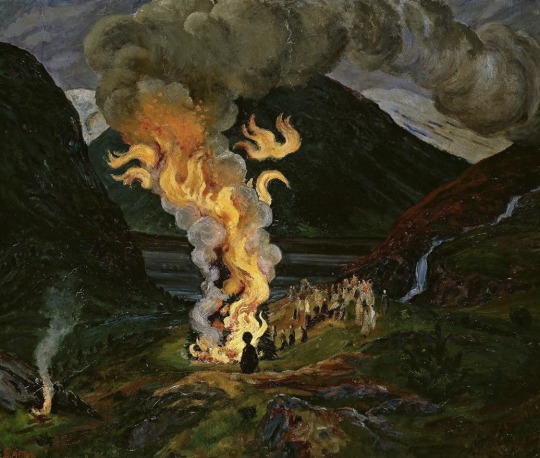
Bonfire Celebrating Midsummer Night by Nikolai Astrup (1912-26)
4K notes
·
View notes
Photo

Xique-Xique, Sertao da Bahia, Brazil, 1961
David Vestal
125 notes
·
View notes
Photo

Tibetan Buddhist Deity Medicine Buddha, Brocadeless Thangka The Medicine Buddha, also called Bhaisajyaguru, is called as such because he is revered for his power to heal physically and spiritually. He is said to heal dukkha or suffering. He is wearing a monk’s robe and is pictured in a cross-legged seating position (Dhyana Aasan). True to tradition, this thangka depicts his left hand in a meditation position on top of his lap while holding a bowl filled with the nectar of life. His other hand appears to be in a wish-granting mudra or position while holding a stem of the myrobalan plant (said to carry medicinal benefits). His most distinguishing feature is his blue skin as he is associated with the precious stone lapis lazuli which comes in rich blue color. Even his Pure Lands is said to be abundant with this stone and in this color, too. This thangka uses rich red color for the rest of the piece (signaling wealth or health) with gold used as outline and color for the other elements. Gold is associated with the sun and the enlightenment it represents. Animals also appear in his aura such as the dragon, tiger, a garuda, and lion to represent the four quadrants of the heavens and the cardinal directions. A snake on the thangka also symbolizes the cycle of life, birth, living, death, and rebirth as related to the snake shedding its skin in its cycle. At the bottom of the thangka is an altar of offering to the Buddha.
210 notes
·
View notes
Photo

korean air night landing.
el segundo, ca.
my instant gram.
43 notes
·
View notes
Text
123K notes
·
View notes
Text

I could see myself living here.
Jimthompsonhouse
1K notes
·
View notes
Text









H.R Giger Museum (1998) Location: Gruyères, Switzerland
5K notes
·
View notes
Text

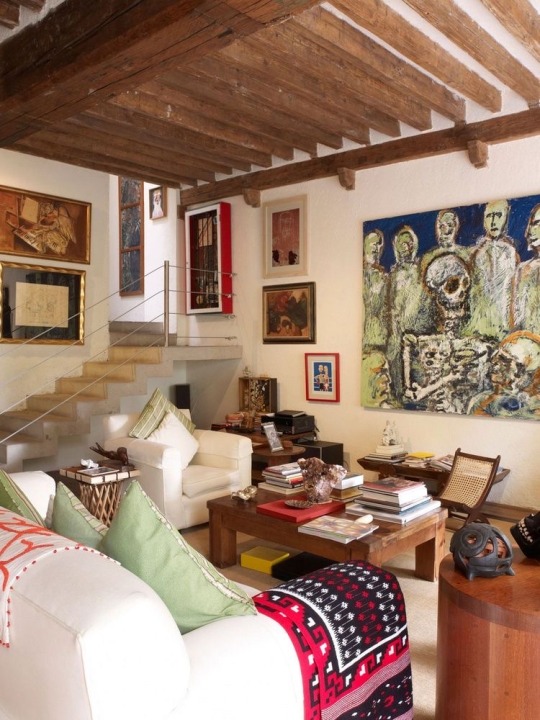
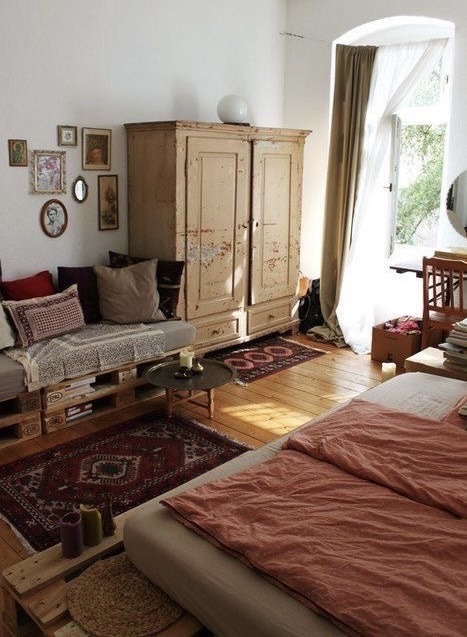


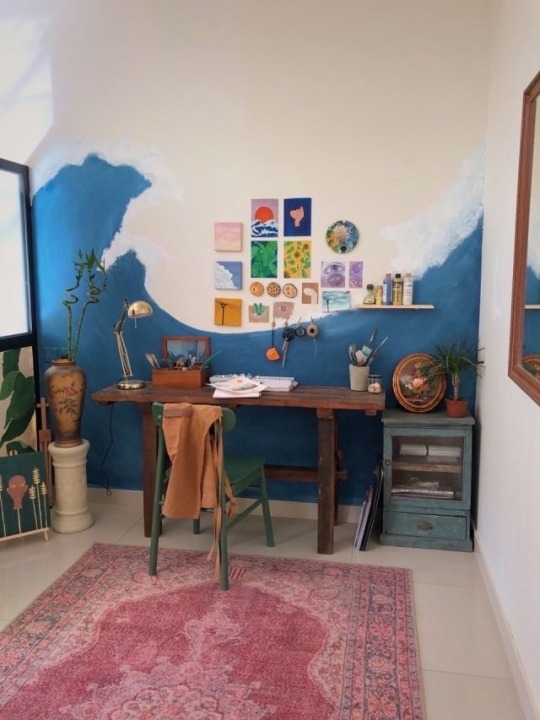
homes with character bring me so much joy ✨
11K notes
·
View notes

